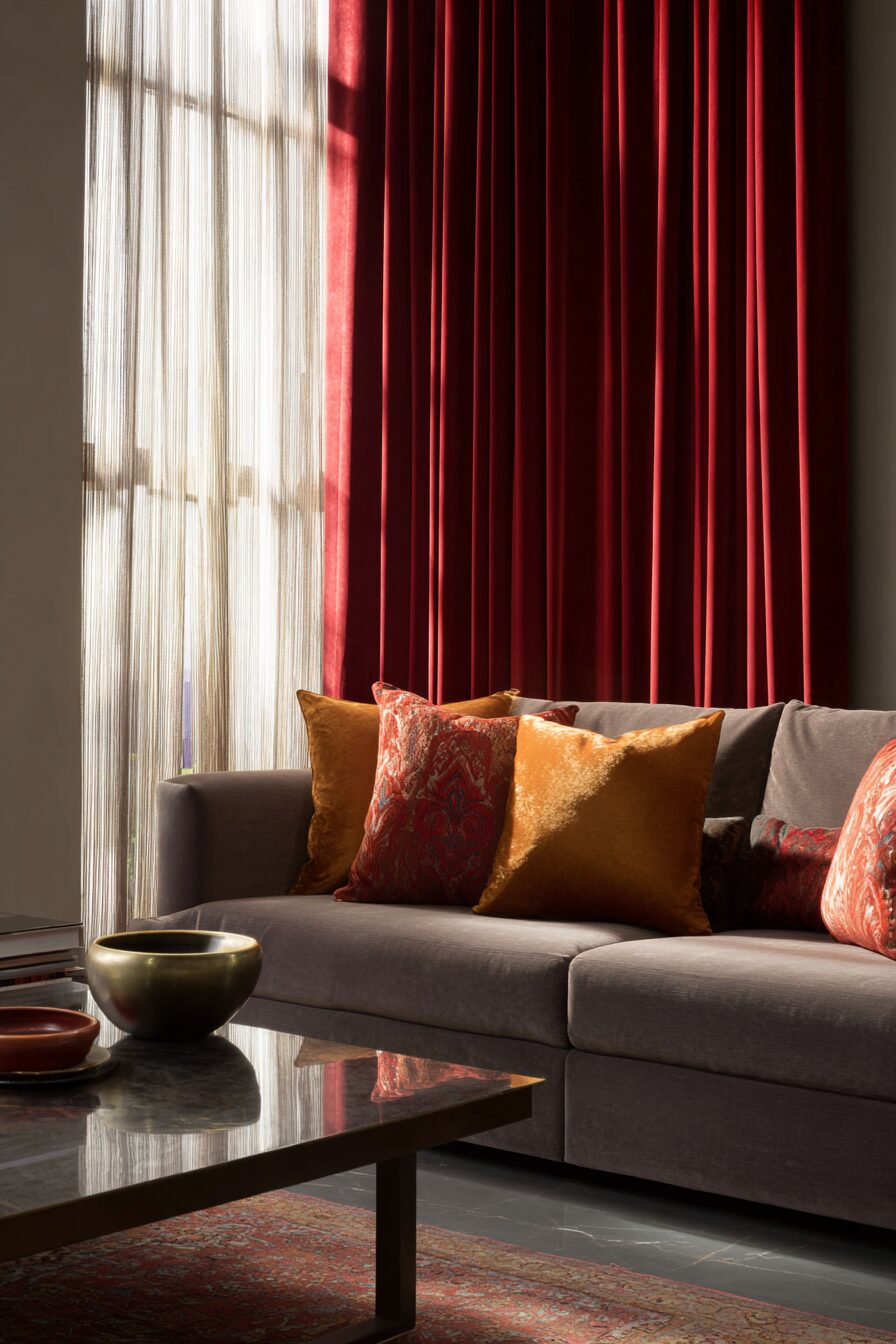Victorian design never truly goes out of style – it just waits patiently for its moment to shine again.
If you’re ready to embrace the drama, elegance, and rich character that defined the Victorian era, your living room is the perfect canvas for this timeless transformation.
Dark, Rich Color Schemes That Command Attention
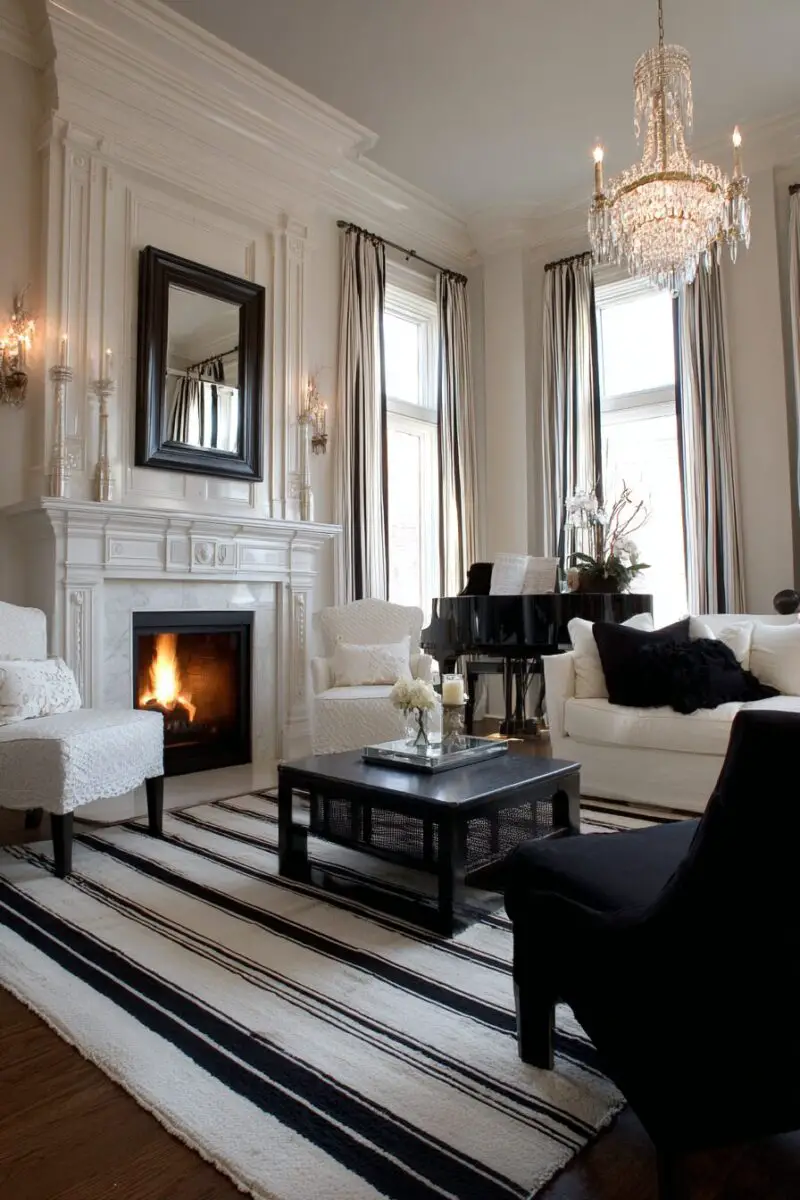
Deep burgundy walls will instantly transport your living room back to the 1800s while creating an atmosphere of sophisticated luxury.
You can start with colors like emerald green, navy blue, or chocolate brown as your base, then layer in complementary shades that add depth and richness.
These darker palettes create intimate spaces that feel cozy during long winter evenings and dramatic enough for entertaining guests.
The key lies in balancing these bold colors with lighter accents through your furniture, artwork, and decorative elements.
Rich jewel tones work particularly well because they reflect the Victorian love for opulence and grandeur.
You’ll find that deep colors actually make rooms feel larger when paired with proper lighting and metallic accents.
Don’t shy away from painting your ceiling in a coordinating darker shade – Victorians often used this technique to create a sense of enclosure and warmth.
Gold, brass, and copper accents will pop beautifully against these rich backgrounds, adding the metallic shimmer that Victorian rooms are famous for.
Your trim and molding can remain white or cream to provide necessary contrast and prevent the space from feeling too heavy.
The psychological impact of these colors creates a sense of refuge from the outside world, which was exactly what Victorian families sought in their private spaces.
Remember that natural light will change how these colors appear throughout the day, so test your chosen shades at different times before committing.
These color schemes work especially well in rooms with high ceilings and large windows, where the natural architecture can support the dramatic intensity.
Ornate Window Treatments That Frame Your Views Perfectly

Heavy velvet drapes with elaborate tiebacks will immediately establish the Victorian aesthetic while providing practical light control and privacy.
Layer your window treatments by starting with sheer panels closest to the glass, then adding heavier drapes that can be drawn for complete privacy.
Swags, valances, and cornices add the decorative elements that Victorians loved, creating visual interest even when your drapes are open.
Rich fabrics like brocade, damask, and tapestry bring texture and pattern that complement your color scheme while adding acoustic benefits.
Tassels, fringe, and braided trim provide the finishing touches that separate authentic Victorian style from simple heavy curtains.
You can mix patterns boldly – Victorians weren’t afraid of combining florals with stripes or geometric designs within the same window treatment.
Cafe curtains on the lower half of windows allow privacy while letting in natural light, a practical solution that was popular during the era.
Hardware matters enormously in achieving the right look – ornate rods in brass, bronze, or wrought iron complete the period-appropriate appearance.
Don’t forget about your window seats if you have them – custom cushions in coordinating fabrics turn these architectural features into cozy reading nooks.
The length of your drapes should extend beyond the window frame and pool slightly on the floor for that luxurious, abundant feeling Victorians preferred.
Tie-backs can be functional or purely decorative, and many Victorian homes featured elaborate metal or fabric holders that became art pieces themselves.
Multiple layers also provide excellent insulation, helping to regulate temperature just as they did in drafty Victorian homes.
Design Your Dream Room in Minutes!
🏡 Start Creating FREE →Vintage Furniture with Modern Comfort Upgrades
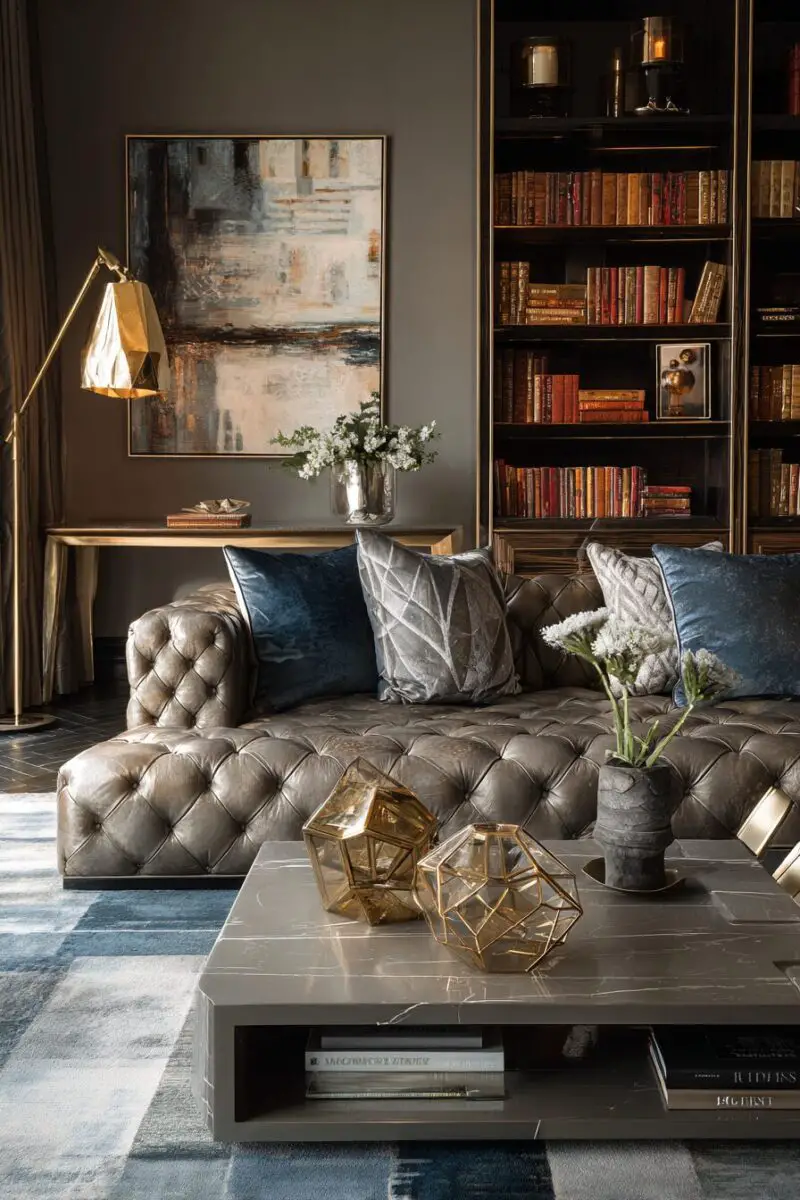
Authentic Victorian furniture pieces serve as statement focal points while modern reupholstering ensures you can actually enjoy sitting on them.
Hunt for original pieces at estate sales, antique shops, and online marketplaces, focusing on solid wood construction that can withstand reupholstering.
Wingback chairs, button-tufted sofas, and ornate side tables capture the era’s love for curves, carvings, and detailed craftsmanship.
You can have antique pieces professionally restored and fitted with modern springs and cushioning for comfort that meets today’s standards.
Mixing authentic antiques with high-quality reproductions allows you to achieve the look without breaking your budget or sacrificing comfort.
Claw-foot tables, marble-topped dressers, and carved wooden chests provide both storage and authentic period character.
Don’t overlook smaller pieces like plant stands, music stands, and decorative screens that add authenticity without requiring major investment.
Modern reproductions often offer better durability and comfort while maintaining the visual appeal of original Victorian designs.
You can blend different wood tones successfully – Victorians mixed mahogany, walnut, and oak within the same room without hesitation.
Reupholstering gives you the opportunity to choose fabrics that match your exact color scheme while maintaining the furniture’s original silhouette.
Look for pieces with original hardware like brass handles, decorative hinges, and ornate keyholes that add authentic details.
Remember that Victorian furniture was built to last generations, so investing in quality pieces or restorations will serve your family well for years to come.
TRENDING NOW
10+ Western Gothic Living Room Ideas To InspireStatement Wallpaper and Wall Treatments That Tell Stories
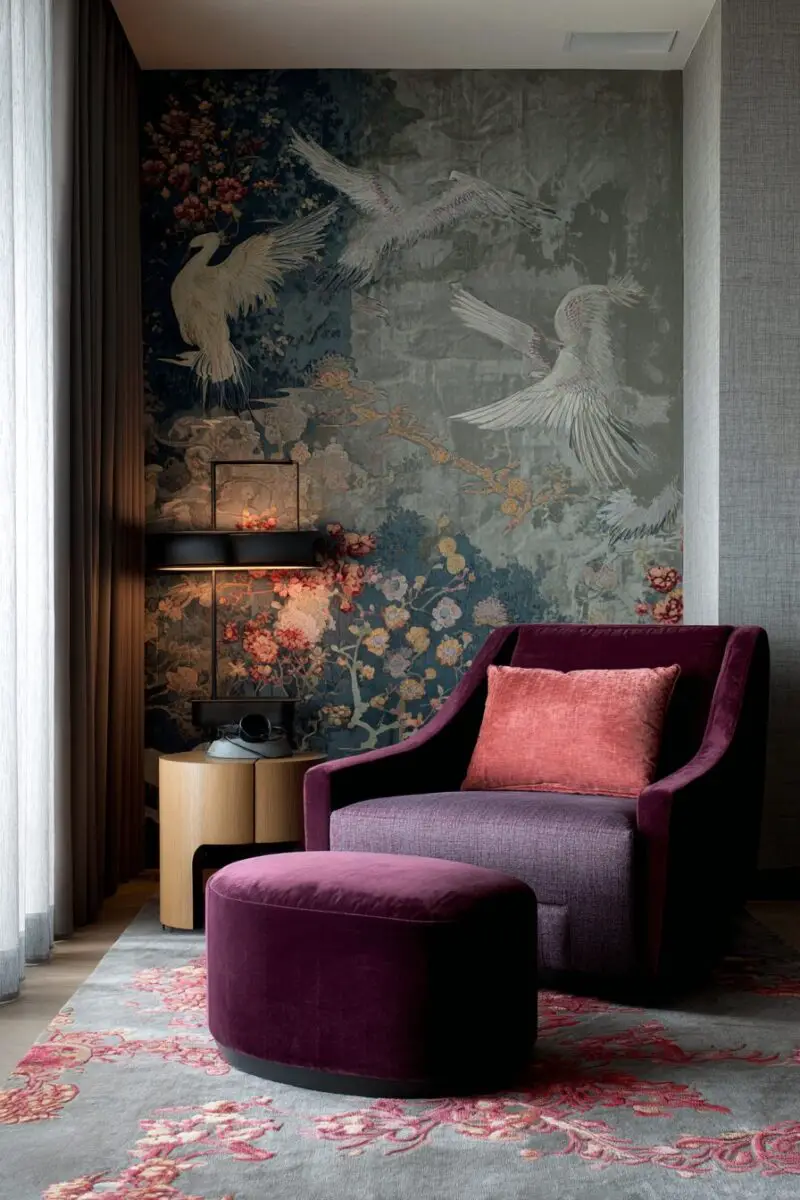
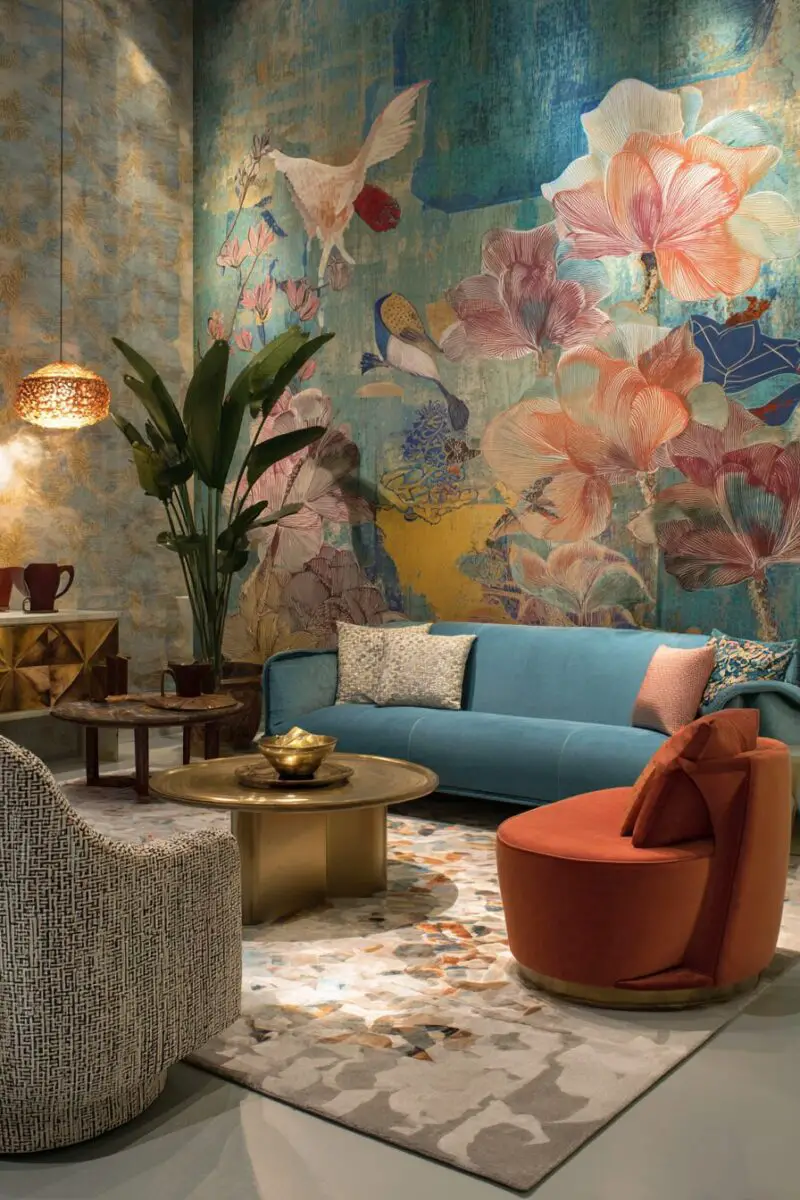
Bold floral patterns, intricate damasks, and rich textures on your walls create the dramatic backdrop that defines Victorian interior design.
You can choose from reproduction Victorian patterns that capture the era’s aesthetic while offering modern materials and installation techniques.
Wainscoting, chair rails, and picture molding break up wall space while adding architectural interest that complements patterned wallpapers.
Deep, saturated patterns work best in rooms with high ceilings, while smaller patterns can make lower-ceilinged spaces feel more intimate rather than cramped.
Metallic accents in wallpaper designs catch light and add the shimmer that Victorians associated with luxury and sophistication.
You don’t need to wallpaper every wall – creating an accent wall with dramatic paper while painting the others in coordinating colors can be equally effective.
Textured wallpapers like grasscloth, fabric-backed papers, or those with raised patterns add tactile interest that engages multiple senses.
Picture rails allow you to display artwork and family photos in the layered, abundant way that Victorians preferred for their personal spaces.
Crown molding and ceiling medallions provide the architectural framework that makes bold wallpaper patterns feel intentional rather than overwhelming.
Original Victorian homes often featured different patterns in different areas of the same room, creating visual zones for various activities.
Borders and chair rails let you mix multiple patterns within the same space, following Victorian principles of “more is more” decoration.
The scale of your furniture should match the scale of your wallpaper patterns – bold patterns need substantial furniture to avoid looking out of proportion.
Layered Lighting with Period-Appropriate Fixtures

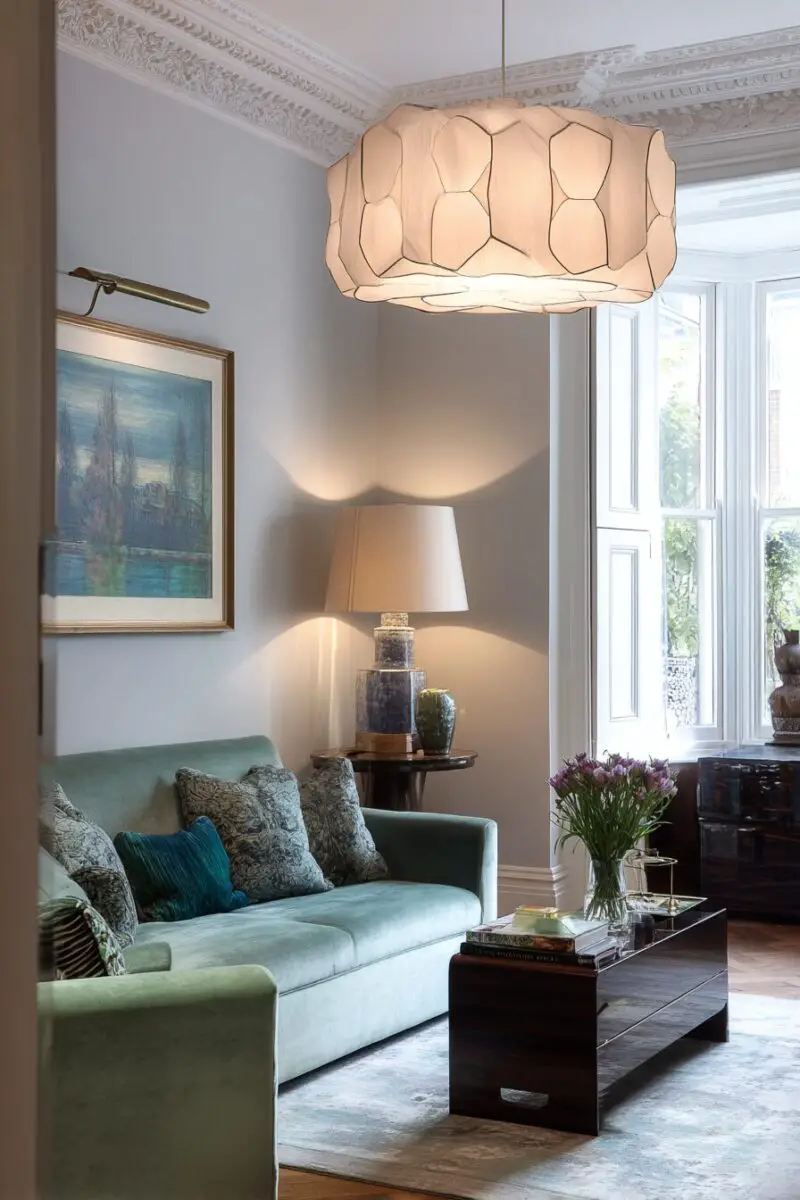
Crystal chandeliers, ornate table lamps, and wall sconces create the multiple light sources that make Victorian rooms feel warm and inviting after dark.
Start with a statement chandelier as your room’s centerpiece, choosing designs with crystal drops, brass details, or stained glass elements.
Table lamps with fabric shades provide task lighting while adding another layer of pattern and texture to your decorative scheme.
Wall sconces flanking your fireplace or artwork create ambient lighting that highlights architectural features and decorative elements.
Candles and oil lamps, while not practical for primary lighting, add authentic atmosphere and the flickering light that Victorians knew.
You can rewire original Victorian fixtures for modern electrical systems while maintaining their authentic appearance and functionality.
Lampshades in rich fabrics, beaded trim, or stained glass filter light beautifully while adding color and pattern to your lighting scheme.
Multiple light sources at different heights create the layered illumination that makes rooms feel larger and more dynamic.
Dimmer switches on modern fixtures allow you to adjust lighting levels throughout the day, creating different moods for various activities.
Gas-light style fixtures, now converted to electricity, provide authentic period appearance with the convenience of modern lighting technology.
Floor lamps with ornate bases and rich fabric shades fill dark corners while providing reading light for comfortable seating areas.
Don’t forget about natural light – Victorian rooms balanced abundant artificial lighting with strategic use of mirrors to amplify available daylight.
TRENDING NOW
13 Cozy Coastal Living Room DesignsDecorative Molding and Architectural Details That Add Character


Crown molding, ceiling medallions, and decorative corbels transform plain walls and ceilings into architectural masterpieces that define Victorian grandeur.
You can add these elements to modern homes using lightweight polyurethane reproductions that look authentic but install more easily than original plaster.
Picture rails and chair rails create visual breaks in wall space while providing practical hanging systems for artwork and decorative objects.
Ceiling medallions frame your chandelier while adding the ornate detail that Victorians loved in every aspect of their interior design.
Baseboards in Victorian homes were typically much taller than modern standards, creating a more substantial foundation for your room’s design.
Column details, whether structural or decorative, add vertical elements that draw the eye upward and emphasize your room’s height.
Decorative brackets and corbels support shelving while adding carved details that showcase the Victorian appreciation for craftsmanship.
You can paint all your molding in contrasting colors to make architectural details pop, or use the same color as your walls for subtle sophistication.
Wainscoting adds texture and visual interest to lower wall areas while protecting them from daily wear and tear.
These architectural elements work together to create the layered, detailed appearance that makes Victorian rooms feel rich and finished.
Professional installation ensures that your molding looks authentic and properly proportioned to your room’s scale and ceiling height.
The investment in quality architectural details pays dividends in both aesthetic appeal and increased home value over time.
Plush Textiles and Fabrics That Invite Touch
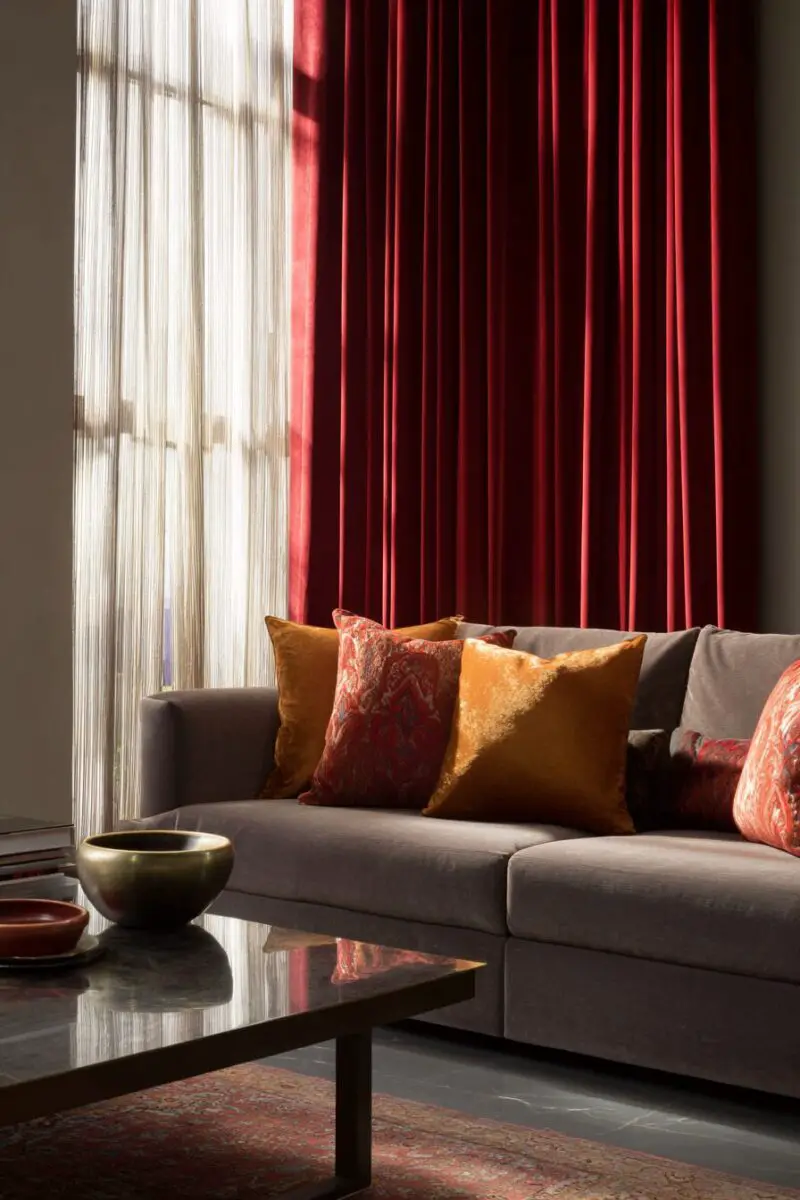
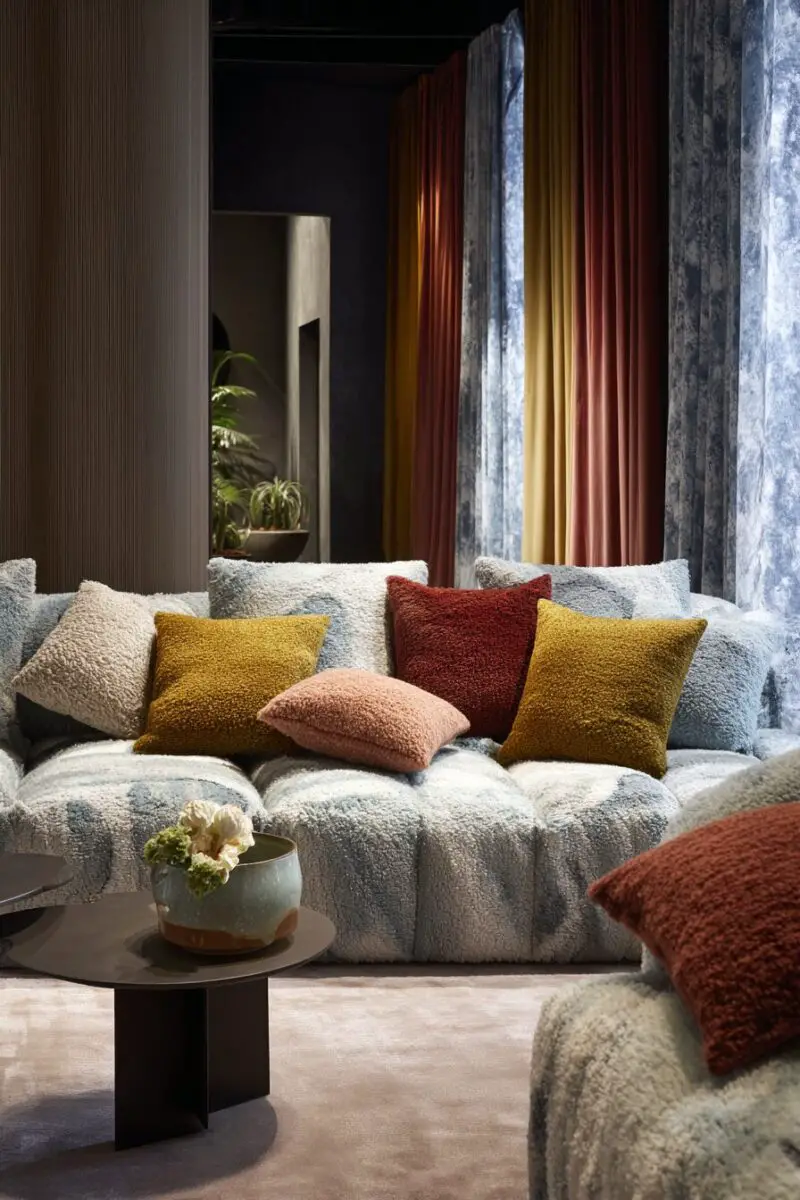
Velvet upholstery, silk throw pillows, and wool area rugs create the luxurious tactile experience that defines authentic Victorian comfort.
Layer different textures throughout your room – smooth silk against nubby wool, polished cotton against rough jute – to create visual and tactile interest.
Heavy drapery fabrics like brocade and damask add weight and substance to your window treatments while providing excellent light control.
Throw pillows in various sizes, shapes, and fabrics let you introduce multiple patterns and colors without overwhelming your seating areas.
Oriental rugs, Persian carpets, and other handwoven textiles provide authentic flooring that was prized during the Victorian era.
You can mix patterns boldly in your textiles – florals with stripes, geometric designs with organic shapes – following Victorian principles of abundant decoration.
Fringed table runners, embroidered antimacassars, and lace doilies add delicate details that soften the heaviness of dark wood furniture.
Upholstered ottomans and footstools provide extra seating while showcasing rich fabrics and detailed trim work.
Fabric wall hangings, tapestries, and textile art pieces add warmth and acoustic benefits while displaying the Victorian love for handcrafted beauty.
Quality fabrics in natural fibers like silk, wool, and cotton age beautifully and maintain their appearance longer than synthetic alternatives.
Professional cleaning and proper care help these investment pieces maintain their beauty and extend their useful life significantly.
The combination of multiple textures creates a room that invites people to settle in comfortably and stay for extended conversations.
Antique Accessories and Collectibles That Spark Conversation
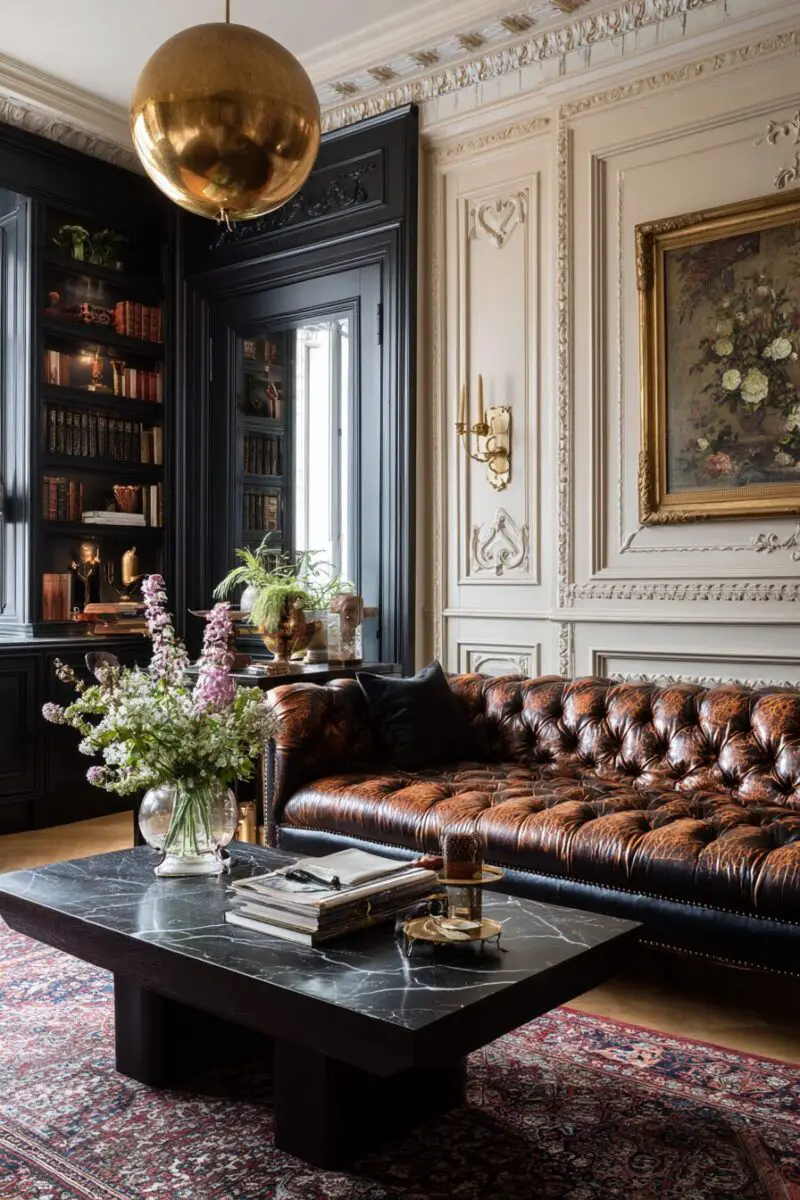
Vintage books, ornate picture frames, and decorative objects arranged in carefully composed vignettes bring personality and history to your Victorian revival.
Hunt for authentic pieces at antique shops, estate sales, and online marketplaces, focusing on items that show the Victorian love for craftsmanship and detail.
Display collections of similar items – vintage bottles, old photographs, or antique boxes – grouped together for maximum visual impact.
Ornate mirrors in gilded frames reflect light around your room while adding the decorative elements that Victorians used to create visual abundance.
Fresh flowers in period-appropriate vases bring life and color to your space while connecting to the Victorian tradition of bringing nature indoors.
Antique clocks, whether working or purely decorative, add vertical elements and serve as conversation starters about craftsmanship and history.
You can mix authentic antiques with carefully chosen reproductions to achieve the layered, collected-over-time appearance that characterizes true Victorian style.
Family photographs in ornate silver or brass frames create personal connections while maintaining the period aesthetic.
Decorative boxes, vintage jewelry, and small ornamental objects can be arranged on side tables and mantels to create intimate displays.
Books with beautiful bindings, whether antique or reproduction, add color and texture while serving as both decoration and entertainment.
Rotating your accessories seasonally keeps your displays fresh while allowing you to enjoy different pieces throughout the year.
The key lies in achieving abundance without clutter – every piece should have purpose and meaning within your overall design scheme.
Gothic and Romantic Elements That Create Drama
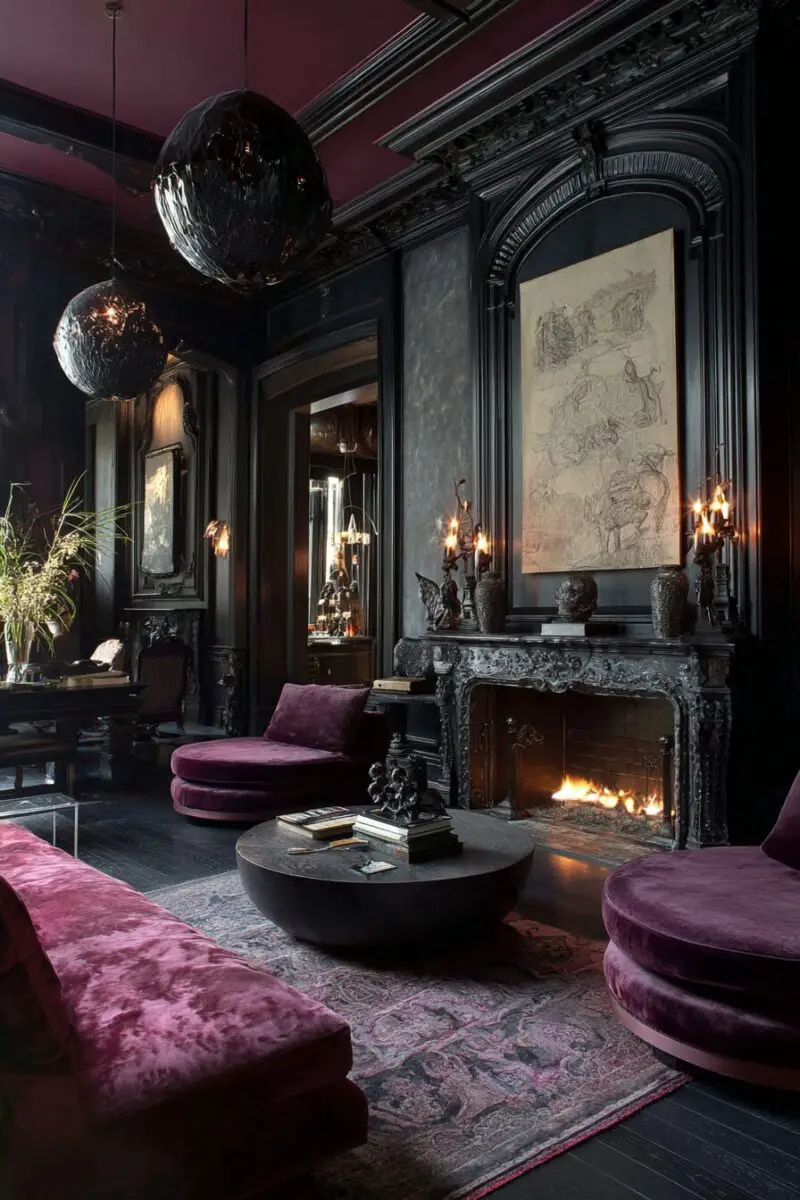
Dark wood furniture with pointed arches, stained glass accents, and medieval-inspired details add the gothic romance that defined Victorian aesthetic sensibilities.
Incorporate pointed arch shapes in your window treatments, furniture silhouettes, and decorative accessories to echo gothic architectural elements.
Stained glass panels, whether original antiques or modern reproductions, filter light beautifully while adding color and pattern to your windows.
Religious or mythological artwork reflects the Victorian fascination with spirituality, literature, and romantic idealism.
Candelabras, wrought iron details, and metal accessories in dark finishes add the dramatic elements that make Victorian rooms feel mysterious and romantic.
You can include Gothic Revival furniture pieces with pointed arches, trefoil patterns, and cathedral-inspired details that were popular during the era.
Rich, dark colors like deep purple, midnight blue, and forest green create the moody atmosphere associated with Gothic romance.
Gargoyle figures, medieval-inspired carvings, and other architectural details bring the outdoor elements of Gothic design into your interior space.
Romantic paintings, poetry books, and literary references celebrate the Victorian love for emotion, beauty, and artistic expression.
Heavy, ornate frames around mirrors and artwork add the substantial presence that Gothic elements require to feel authentic rather than theatrical.
These dramatic elements work best when balanced with lighter touches and comfortable seating that invites daily use rather than just admiration.
TRENDING NOW
9+ Black And Brown Living Rooms For A Cozy FeelTraditional Fireplaces as Commanding Focal Points
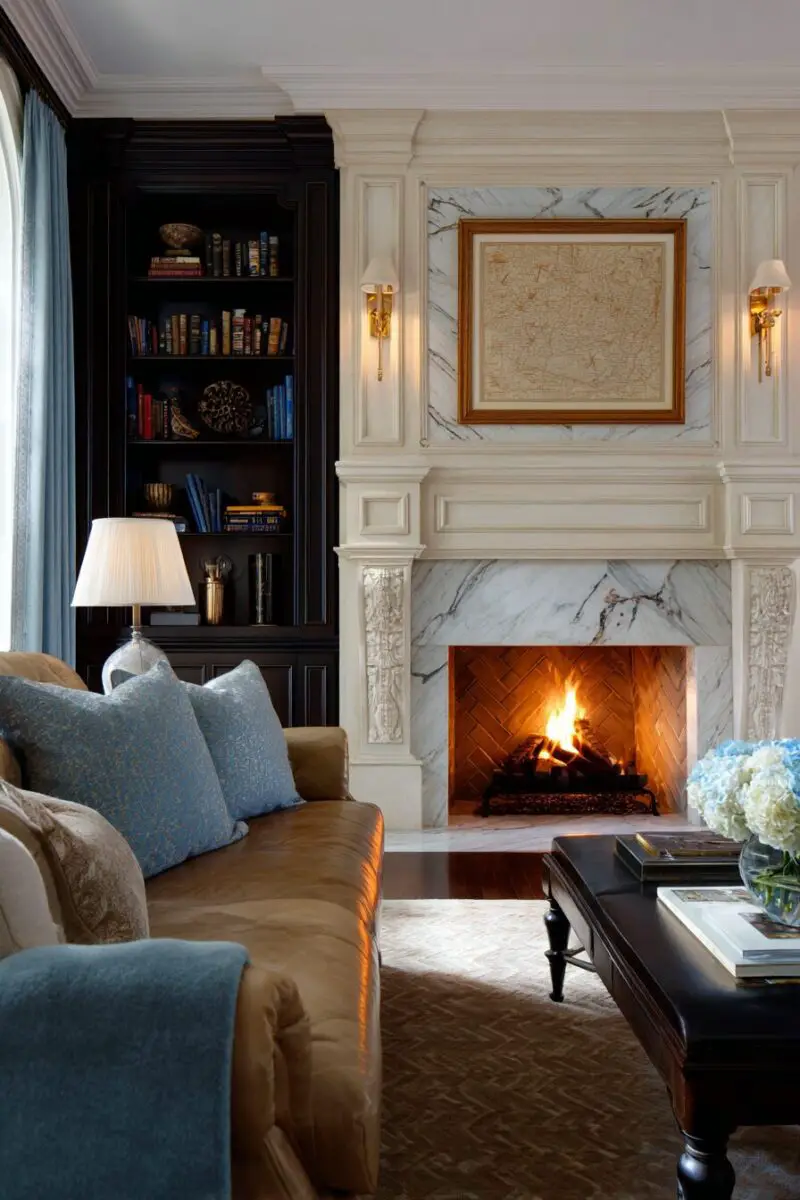
An ornate mantelpiece with carved details, decorative tiles, and brass accessories creates the heart of your Victorian living room where family and guests naturally gather.
You can restore an existing fireplace with period-appropriate tiles, a new mantel, and authentic hardware that captures Victorian craftsmanship.
Decorative fire screens, brass tools, and ornate andirons add functional beauty while maintaining the safety and practicality of your fireplace.
The mantel provides perfect display space for family photographs, decorative objects, and seasonal arrangements that change throughout the year.
Victorian fireplaces often featured intricate tile work in rich colors and patterns that complement your room’s overall color scheme.
You can install a gas or electric insert in an existing fireplace to enjoy the ambiance without the maintenance of a traditional wood-burning system.
Overmantel mirrors, artwork, or decorative panels create vertical emphasis while reflecting light throughout your room.
Brass or iron fireplace accessories like bellows, coal scuttles, and log holders add authentic details even if your fireplace isn’t your primary heat source.
The area around your fireplace becomes a natural conversation zone where comfortable seating arrangements encourage intimate gatherings.
Seasonal decorating on and around your mantel lets you celebrate holidays while maintaining your Victorian aesthetic throughout the year.
Professional restoration of original fireplace elements often proves more cost-effective than complete replacement while maintaining authentic period character.
Victorian living room revival isn’t about creating a museum – it’s about embracing the era’s love for beauty, comfort, and craftsmanship in ways that work for modern life.
These ideas will help you create a space that honors the past while serving your family’s needs today, proving that good design truly is timeless.

